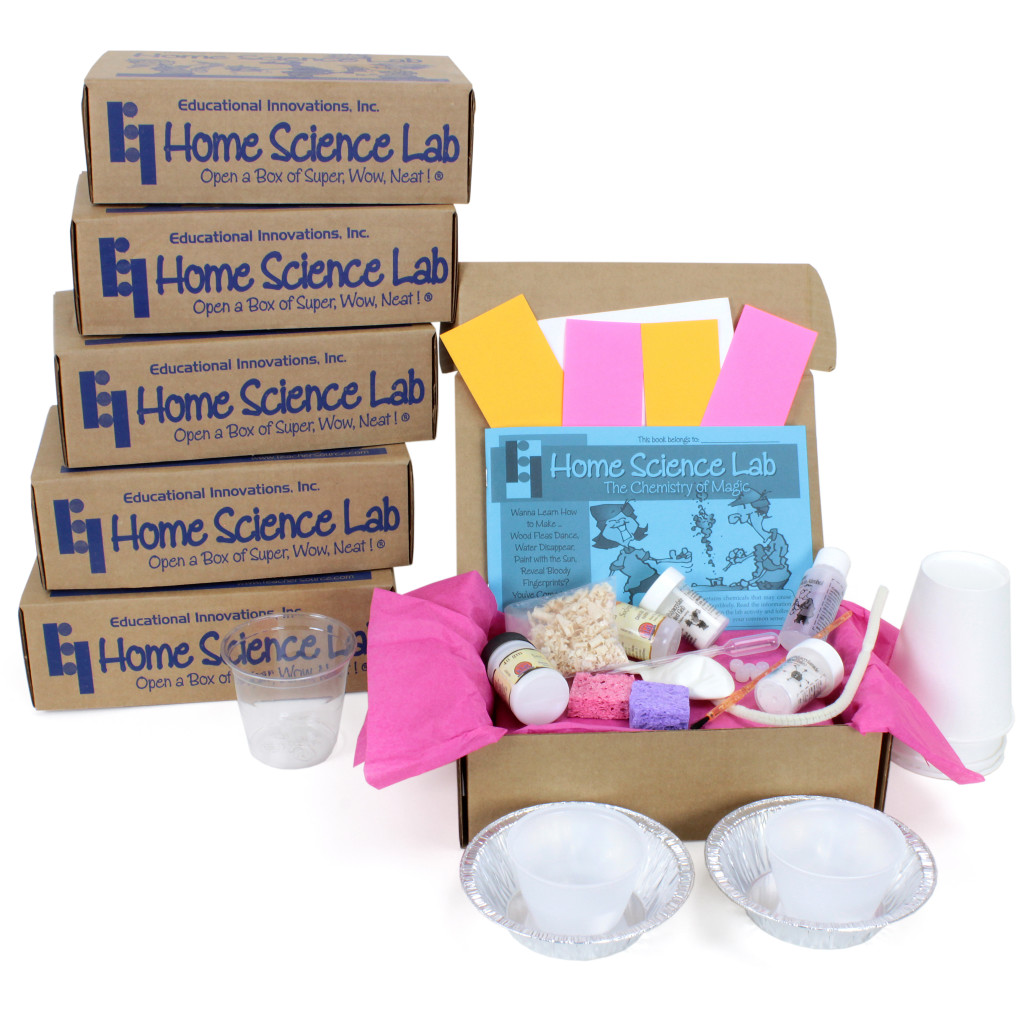September 15, 2017
 by Tami G. O’Connor
by Tami G. O’Connor
As elementary school teachers, we aim to help our students become scientifically literate (among many other things). But let’s face it: too often we have limited time for science instruction during the school day. Still, we know that kids just love science! They’re always eager to learn more about the world around them, especially when they’re having fun while they’re learning.
But what can we do when our science teaching time is so limited in school? How do you get students involved in scientific discovery outside the classroom? Sure, you can give them homework, but many kids find simply reading about science unappealing. You want your students to LOVE learning more about science… not dread it.
Read the rest of this entry »
 1 Comment |
1 Comment |  Elementary level, energy, experiments, life science, magnetism, Physics, STEM | Tagged: discrepant event, DIY, Educational Innovations, elementary science, experiments, fun experiments, hands-on activity, homeschool, parent friendly, PBL, PhBL, PhenoBL, phenomenon based learning, science, science fair project, STEM |
Elementary level, energy, experiments, life science, magnetism, Physics, STEM | Tagged: discrepant event, DIY, Educational Innovations, elementary science, experiments, fun experiments, hands-on activity, homeschool, parent friendly, PBL, PhBL, PhenoBL, phenomenon based learning, science, science fair project, STEM |  Permalink
Permalink
 Posted by Donna Giachetti
Posted by Donna Giachetti
August 25, 2017
 By Cathy Byrne
By Cathy Byrne
This is one of my favorite team-building, icebreaker activities. It’s also a great way to introduce your students to engineering! It can be done with students at many different grade levels. At the beginning of class, I start by welcoming my students to the staff of [Insert-the-name-of-your-school-here] Engineering Company.
I split the class into small groups and tell them: your team has been tasked with constructing the tallest free-standing tower you can build with the materials provided. I give each team a bag containing 20 pipe cleaners and I let them dive right in. It doesn’t take long for the teams to figure out that they need a strong base to hold the flimsy pipe cleaners.
Read the rest of this entry »
 2 Comments |
2 Comments |  College level, Elementary level, experiments, High School level, Middle School level, STEM | Tagged: Educational Innovations, engineering, experiments, fun experiments, hands-on activity, homeschool, parent friendly, PBL, PhBL, PhenoBL, phenomenon based learning, science, STEM, variables |
College level, Elementary level, experiments, High School level, Middle School level, STEM | Tagged: Educational Innovations, engineering, experiments, fun experiments, hands-on activity, homeschool, parent friendly, PBL, PhBL, PhenoBL, phenomenon based learning, science, STEM, variables |  Permalink
Permalink
 Posted by Donna Giachetti
Posted by Donna Giachetti
July 7, 2017

 by Priscilla Robinson
by Priscilla Robinson
Dinosaurs inspire curiosity and wonder in scientists of all ages. With the help of Educational Innovations’ Home Science Lab: Tabletop Fossil Safari, young learners can conduct investigations at home to dynamically discover how fossils were created millions of years ago, and to better understand how they continue to be unearthed by paleontologists today. Everything you need comes in the nifty Home Science Lab box: six activities organized in a booklet filled with easy-to-follow instructions, whimsical illustrations and photographs, assorted chemicals, household items, and of course, real fossils!
It’s so easy, even a grandmother can do it. Seriously!
Read the rest of this entry »
 2 Comments |
2 Comments |  Biology, Earth Science, Elementary level, experiments, life science, Middle School level | Tagged: DIY, Educational Innovations, experiments, fun experiments, hands-on activity, home science lab, homeschool, parent friendly, science |
Biology, Earth Science, Elementary level, experiments, life science, Middle School level | Tagged: DIY, Educational Innovations, experiments, fun experiments, hands-on activity, home science lab, homeschool, parent friendly, science |  Permalink
Permalink
 Posted by Donna Giachetti
Posted by Donna Giachetti
June 16, 2017
 by Linda Dunnavant
by Linda Dunnavant
Most kids find the idea of science thrilling. It conjures up images of potions, explosions, and top-secret laboratories. When I asked my son what kind of birthday party he wanted this year, he eagerly exclaimed, “A science party!” That night, I was taken aback when I Googled science birthday party ideas. Many of the suggestions seemed far too adult-led and complicated—not to mention expensive!
Read the rest of this entry »
 2 Comments |
2 Comments |  Elementary level, experiments, Middle School level | Tagged: DIY, Educational Innovations, experiments, fun experiments, halloween fun, hands-on activity, homeschool, parent friendly, science, STEM |
Elementary level, experiments, Middle School level | Tagged: DIY, Educational Innovations, experiments, fun experiments, halloween fun, hands-on activity, homeschool, parent friendly, science, STEM |  Permalink
Permalink
 Posted by Donna Giachetti
Posted by Donna Giachetti
June 2, 2017
 By Jeremy Johnson
By Jeremy Johnson
In my 13 years of classroom teaching experience, I’ve learned a few tricks to keep my students from becoming overwhelmed—or bored—by their science textbooks. One of my favorite tricks is to get my kids up on their feet, doing science instead of reading about it.
When I teach about gravity and center of mass, for example, I like to shake things up by turning our classroom into an impromptu biokinetics lab. I challenge my students to perform a series of seemingly simple physical tests, described below. Lift a chair? Raise your leg? Pick up a quarter? No problem! (Or so they think…)
Read the rest of this entry »
 5 Comments |
5 Comments |  College level, Elementary level, experiments, High School level, Middle School level, Physics | Tagged: discrepant event, DIY, Educational Innovations, experiments, force and motion, fun experiments, hands-on activity, homeschool, newton, parent friendly, PBL, PhBL, PhenoBL, phenomenon based learning, Physics, science, variables |
College level, Elementary level, experiments, High School level, Middle School level, Physics | Tagged: discrepant event, DIY, Educational Innovations, experiments, force and motion, fun experiments, hands-on activity, homeschool, newton, parent friendly, PBL, PhBL, PhenoBL, phenomenon based learning, Physics, science, variables |  Permalink
Permalink
 Posted by Donna Giachetti
Posted by Donna Giachetti
 by Tami G. O’Connor
by Tami G. O’Connor


 Posted by Donna Giachetti
Posted by Donna Giachetti  By Cathy Byrne
By Cathy Byrne

 by Linda Dunnavant
by Linda Dunnavant By Jeremy Johnson
By Jeremy Johnson